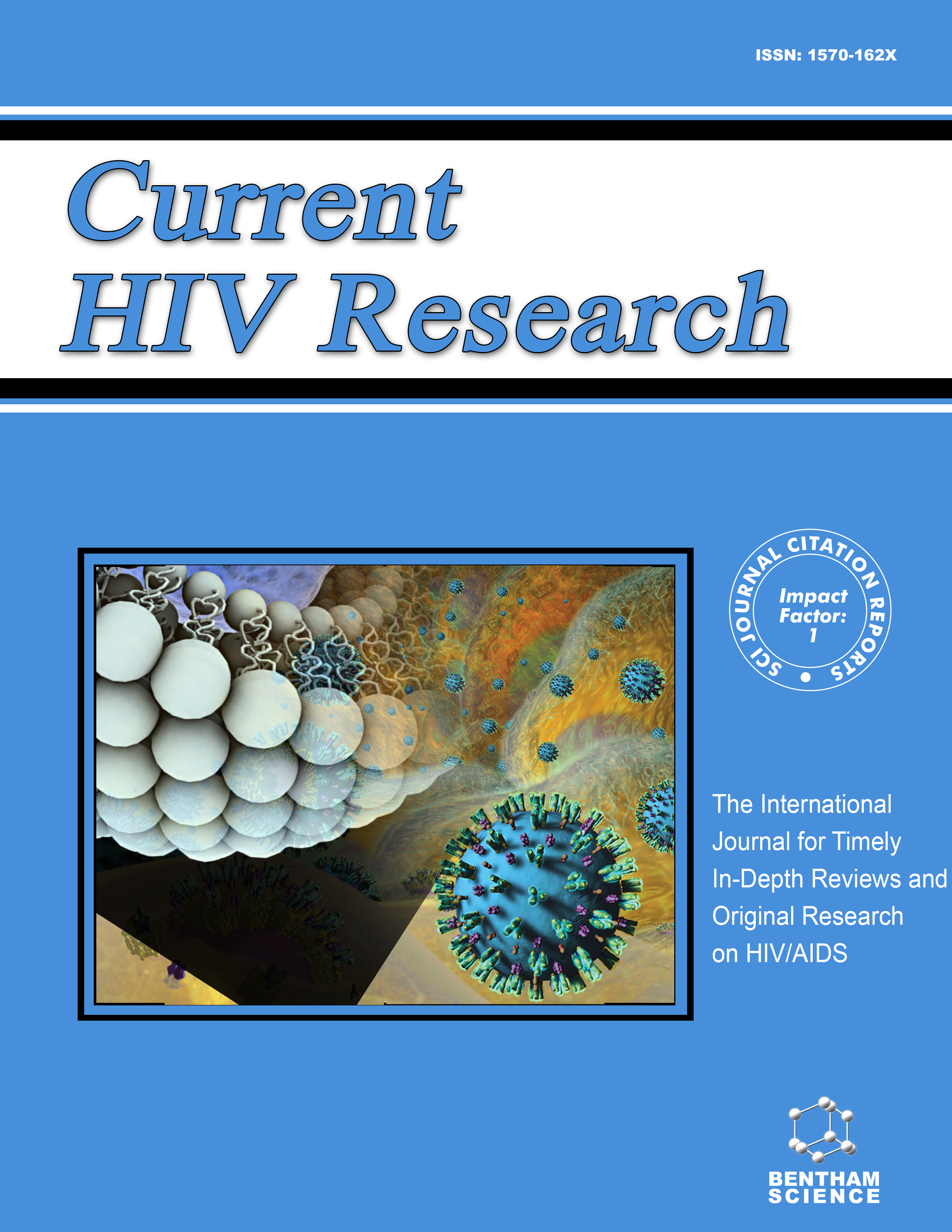- Home
- A-Z Publications
- Current HIV Research
- Previous Issues
- Volume 1, Issue 3, 2003
Current HIV Research - Volume 1, Issue 3, 2003
Volume 1, Issue 3, 2003
-
-
Resistance to Apoptosis: Mechanism for the Development of HIV Reservoirs
More LessAuthors: Julian J. Lum and Andrew D. BadleyNew insights into the physiological cell death program in mammalian cells have further confounded the central issue of T lymphocyte destruction during HIV infection. Although infected and uninfected cells die following infection, recent evidence indicates that infected and uninfected cells may have unique pathways controlling death. Two widely accepted models for apoptosis have been described, namely the intrinsic and extrin Read More
-
-
-
HIV-1 Replication and Pathogenesis in the Human Thymus
More LessAuthors: Eric G. Meissner, Karen M. Duus, Rebecca Loomis, Rhiannon D`Agostin and Lishan SuHow HIV replicates and causes destruction of the thymus, and how to restore thymic function, are among the most important questions of HIV-1 pathogenesis and therapy in adult as well as pediatric patients. The thymus appears to function, albeit at reduced levels, throughout the life of adults, to respond to T cell depletion induced by HIV and to be suppressed by HIV. In this review, we summarize recent findings concerni Read More
-
-
-
Molecular Mechanisms and Biological Significance of CTL Avidity
More LessCD8 CTLs are a major effector for protection against cancer as well as many infectious diseases, including HIV / AIDS [2, 8, 11, 31, 35]. CD8 CTL recognize antigenic peptides in the context of class I MHC. CTL functional avidity has been shown to be an important determinant of in vivo efficacy. CTL that can recognize peptide / MHC only at high antigen density are termed low avidity CTL, while those that can recognize their cogn Read More
-
-
-
HIVs Evasion of Hosts NK Cell Response and Novel Ways of its Countering and Boosting Anti-HIV Immunity
More LessAuthors: Ali Ahmad and Rasheed AhmadNK cells were characterized by their ability to spontaneously kill certain tumor and virus-infected cells. They constitute first line of defense against invading pathogens and usually become activated in viral infections particularly in early phases. Activated NK cells play a crucial role in the induction and amplification of virus-specific immunity by providing IFN-γ and “danger signal”. The functional activities of NK cells are reg Read More
-
-
-
Advances in Vaccine Adjuvants For Infectious Diseases
More LessAuthors: Manmohan Singh and Indresh SrivastavaA HIV Vaccine, particularly that based on recombinant proteins and plasmid DNA, is likely to be less reactogenic than traditional vaccines, but also less immunogenic. Therefore, there is an urgent need for the development of new and improved adjuvants and delivery system for combination with HIV vaccine antigens. Adjuvants can be broadly separated into two classes, based on their principal mechanisms of action; “vaccine Read More
-
-
-
Preventing Neonatal HIV: A Review
More LessAuthors: Heather B. Jaspan and Robert F. GarryMother-to-child transmission of human immunodeficiency virus type 1 has become rare in developed countries, with the use of highly active antiretroviral treatment, elective cesarean section, and avoidance of breastfeeding. In the developing world, however, these interventions are unfeasible, and costsaving methods for prevention of vertical transmission are vital. Prevention begins with voluntary counseling and tes Read More
-
-
-
Lessons Learned from HIV Treatment Interruption: Safety, Correlates of Immune Control, and Drug Sparing
More LessAuthors: Livio Azzoni, Emmanouil Papasavvas and Luis J. MontanerTherapeutic approaches seeking to limit the exposure to antiretroviral drugs while retaining the benefits of continuous therapy have become an active area of investigation in HIV therapy research. Although early attempts to use interruptions of therapy as auto-vaccination strategies have shown little success, much has been discovered in regards to immunological correlates of viral control in acute and chronic infection, vir Read More
-
-
-
Chromatin Remodeling and Modification during HIV-1 Tat-activated Transcription
More LessHuman immunodeficiency virus type 1 (HIV-1) is the etiologic agent of AIDS. Following entry into the host cell, the viral RNA is reverse transcribed into DNA and subsequently integrated into the host genome as a chromatin template. Chromatin structure may be responsible for silencing retroviral gene expression. Transcriptional activation occurs after ATP-dependent chromatin remodeling complexes alter chromatin stru Read More
-
-
-
The Evolutionary Adaptation of HIV-1 to Specific Immunity
More LessRecent evidence of the evolutionary adaptation of HIV-1 to the specific immune system is reviewed. Longitudinal studies of patients show that a neutralizing antibody (NAb) response specific to autologous virus is detectable within 1-2 months of infection and that viral variants resistant to neutralization arise and spread in the viral population within the subsequent three months, and that this general pattern is repeated. Th Read More
-
Volumes & issues
-
Volume 23 (2025)
-
Volume 22 (2024)
-
Volume 21 (2023)
-
Volume 20 (2022)
-
Volume 19 (2021)
-
Volume 18 (2020)
-
Volume 17 (2019)
-
Volume 16 (2018)
-
Volume 15 (2017)
-
Volume 14 (2016)
-
Volume 13 (2015)
-
Volume 12 (2014)
-
Volume 11 (2013)
-
Volume 10 (2012)
-
Volume 9 (2011)
-
Volume 8 (2010)
-
Volume 7 (2009)
-
Volume 6 (2008)
-
Volume 5 (2007)
-
Volume 4 (2006)
-
Volume 3 (2005)
-
Volume 2 (2004)
-
Volume 1 (2003)
Most Read This Month
Article
content/journals/chr
Journal
10
5
false
en


